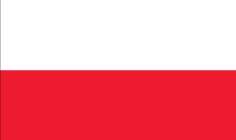
Leasing activity in Poland has boomed since the end of 2014 on the back of rapid economic expansion and looks set for further strong growth in 2016. By Paul Golden.
As the UK debated the value of EU membership, on the other side of the continent Poland was reaping the benefits of convergence with the economic-political union.
GDP growth reached 3.6% in 2015, driven by robust domestic demand supported by healthy wage and credit expansion.
Unemployment has come down rapidly and the economy is operating at close to full capacity. The IMF projects that growth will remain robust through this year and accelerate to close to 4% in 2017 on the back of strong private consumption.
According to Mieczys?aw Wo?niak, vice-chairman of the executive committee of the Polish Leasing Association and a member of the board of directors of Leaseurope, the role of leasing in investment financing in Poland is growing steadily.
Data from the Polish Leasing Association (whose members represent 90% of the Polish leasing market) shows that new leasing business reached PLN 49.8bn last year, an increase of 16.3% from 2014. Growth was even more pronounced in the first three months of this year, up by 23% year-on-year.
How well do you really know your competitors?
Access the most comprehensive Company Profiles on the market, powered by GlobalData. Save hours of research. Gain competitive edge.

Thank you!
Your download email will arrive shortly
Not ready to buy yet? Download a free sample
We are confident about the unique quality of our Company Profiles. However, we want you to make the most beneficial decision for your business, so we offer a free sample that you can download by submitting the below form
By GlobalData"Alongside bank loans, leasing is the main external source of investment funding in the Polish economy," explains Wo?niak. "The structure of the Polish leasing market remains very similar to the structure of the wider European leasing sector."
At the end of 2015, cars and light commercial vehicles up to 3.5 tons accounted for 37.5% of the market, while machines and other equipment (including IT) accounted for 31.9% and heavy transport had 27.1% market share.
Cars and light commercial vehicles continue to be the key driving force of the Polish leasing market, adds Wo?niak. "We observed high growth dynamics in the segment last year (up 20% year-on-year and with new business valued at PLN 18.7bn). The performance of the leasing industry was strongly tied to the visible increase in registrations of new passenger cars and light commercial vehicles in 2015, which was up by 9.4% to more than 408,000 vehicles."
The growth of the segment was mainly driven by passenger cars, facilitated by changes in VAT regulation concerning leasing of premium segment cars in the first half of last year. An additional driver was the 50% deduction of VAT on fuel introduced on 1 July 2015, which translated into faster growing registration figures for new cars purchased by businesses than by individual customers.
"The next segment to record growth was machinery and equipment (including IT)," Wo?niak continues. "Growth of 12% and financing of PLN 15.9bn were driven by high utilisation rates and relatively high economic growth in 2015, increasingly driven by domestic demand. This was reflected in higher dynamics in machine financing through leasing."
The Polish Leasing Association also observed the impact of the 2007-2013 multiannual financial framework on investments in all sectors.
"Following an increase of 23.1% year-on-year in Q1 2015 and an even stronger Q2 when the segment grew by 42.2% (mainly as a result of spending driven by EU funding), performance in the second half of the year was negative and stood at -16.1%," explains Wozniak. "For the same reason, we saw a sharp decline in the financing of construction equipment through loans – down 48.5% year-on-year between July and December 2015."
Financing of heavy-duty vehicles, ships, aircrafts and other specialised vehicles is the third largest area of focus for leasing companies in Poland and reported 18% growth and financing totalling PLN 13.5bn last year.
Wozniak observes that stable growth in this segment in 2015 was driven by the Eurozone recovery and thus the recovery of Polish exports, combined with a rise in domestic demand. Growth in truck financing as a sub-segment, which stood at 11.5% between January and June 2015 accelerated to 21.3% in the second half of the year.
The positive development of the Polish leasing market is supported to a great extent by the tremendous growth in the passenger car market and heavy transport vehicles, agrees Mariusz Tarasiuk, CEO BNP Paribas Leasing Solutions Poland. "We can also observe a change in companies’ mentality towards leasing. Together with economic growth and falling interest rates, the previous preference for ownership of vehicles has shifted towards leasing or even full service leasing."
However, he also refers to a visibly lower level of financing for agricultural equipment in the first three months of this year, connected with the slowdown in implementation of EU subsidies. This decrease in financing of agricultural assets resulted in the sector accounting for a smaller share of machinery and equipment financing (down from 36.4% in 2014 to 31.9% last year and 24% in Q1 2016).
Rados?aw Kuczy?ski, CEO at EFL (Europejski Fundusz Leasingowy, part of Credit Agricole Group) observes that the total value of the active portfolio of the leasing market at the end of 2015 was comparable to the value of the investment loans given by banks to companies.
"We should look at the longer term perspective to assess the growing importance of leasing among companies in Poland," he says. "In the year Poland acceded to the European Union (2004), lessors in Poland financed assets worth PLN14bn – since then we have recorded a three-and-a-half-fold increase."
Kuczy?ski describes this an impressive result in comparison to other EU countries. "During the last 12 years, only once has the Polish market slowed – in 2009 – and that was after the outbreak of the global economic crisis. Last year was the sixth in a row in which the value of leasing increased."
A quarterly survey conducted by EFL among SMEs (the most recent covering the first quarter of 2016) shows that the primary source of financing for small businesses in Poland is own resources. However, taking into account external support, the most popular option is not bank loan but leasing – 41.5% vs. 43.8%.
"A clear trend in the use of financial products can be seen by looking at the size of companies," says Kuczy?ski. "According to this metric, the more workers a company employs the more it uses external funds. While only 28% of microenterprises use leasing, among medium sized enterprises this figure is much higher at 59%. Taking into account industries, transport and industrial companies are the most extensive users of leasing."
He explains that lease financing for passenger cars and light commercial vehicles is more attractive than bank loans because of the lower cost of financing, accounting rules and the simplicity and availability of financing.
According to Leaseurope, Polish is the sixth biggest leasing market in Europe behind the UK, Germany, France, Italy and Sweden, says Rafal Piskorski, general manager CEE & country manager Poland De Lage Landen Leasing.
The health of the lease market is one of the factors that can act as proof of the stable and sound situation of Polish economy, he continues. "It is worth mentioning that the number of bankruptcies is expected to fall for a second year in a row to reach the lowest level in recent history. These elements influence how leasing companies are assessing risk related to financing domestic companies and justifies the increase in the leasing market."
According to Piskorski, leasing companies are working hard to increase demand in business segments such as IT and healthcare, although he acknowledges that those two markets are still in early growth phase – for example, current penetration of leasing in the IT sector is less than 2%.
When asked whether the Polish government actively supports the growth of the country’s lease finance industry, he observes that since the beginning of February, Poland’s Banking Tax Act applies to selected financial institutions ? domestic banks, consumer lending institutions and insurance companies.
"The new banking tax is aimed specifically at the banking and insurance sectors and does not cover investment and pension funds," explains Piskorski. "The conservative Law and Justice party proposed the new tax (together with a new retail tax) during its successful campaign in Poland’s parliamentary elections in October 2015."
These two new taxes are meant to be the key income generators for the state budget over the next four years and are generally designed to finance generous spending promises. "The overall impression is that the Polish government is not putting in place special actions to support growth of the lease finance industry, although leasing companies (mainly financing SME business) are not subject to the new tax regime and therefore more competitive than pure banking products," says Piskorski.
There were 30 leasing companies operating in the Polish leasing market at the end of 2015. The shift in market share between bank-owned, independent and manufacturer-owned lessors is illustrated by the fact that while four of the top 10 leasing companies in 1995 were owned by banks, 20 years on that proportion was 100%. Last year, bank-owned lessors accounted for 82% of the market, with captives securing 12% and only 6% going to independents.
"The fundamental change is the marginalisation of independent players," explains Wozniak. "On the other hand, we observe an increasing role for non-banking owned institutions, including both captive and specialised lessors."
Since last year’s election there has been a significant shift in government economic policy. The new government has indicated its intention to change the regulatory environment, mainly concerning the rules of conducting business in Poland in addition to the new tax code.
However, Bart?omiej Bronisz, advocate at FKA Furtek Komosa Aleksandrowicz and Polish Leasing Association expert observes that since the details are not yet known and the appropriate bills have not yet been published, it is unclear what impact such a shift in the government’s economic policy may have on the business environment in Poland.
"It is also not known when the expected legislation will come into force," he adds. "Hence the biggest challenge in the coming months and probably years for the leasing sector in Poland is to prepare itself for incoming changes and assess the potential influence on the financial standing of its clients. However, it is expected that the government will loosen administrative restrictions in conducting business, especially in relation to SMEs."
When asked about his expectations for growth in the leasing market over the next 12 months, Wozniak notes that leasing market dynamics are linked to private investments and economic growth.
"We believe that in 2016, the market will be driven by light vehicles (we assume maintained growth in new passenger car registrations at 10%, favourable fiscal regulations, strong domestic demand and good climate in sales); heavy duty vehicles (we observe improving micro economies in the Eurozone, visible exports growth and limited impact of protectionism in Germany and France on the volume of provided transport services); and financing of machines and equipment through leasing (assuming high utilisation of production capacity amongst Polish companies and stable Polish economy)."
Poland’s leasing market will likely expand by around 14% in 2016 and will be in line with the projected growth in private investments and the economic development scenario, adds Tarasiuk. "We will observe the positive impact of stable growth in employment and increased internal consumption," he says. "These favourable trends will persist in 2016, while the scale of improvements in the labour market will not be as significant as last year. As in 2015, the leasing dynamic will be mainly based on investments in light and heavy vehicles and machines – unlike western Europe, real estate financing in Poland will remain marginal in terms of leasing company volumes."
Piskorski notes that while a slowdown in the agricultural segment is expected for the first three quarters of 2016 due to the postponed roll-out of the EU subsidies programmes, it is also worth mentioning that the sector is becoming increasingly mature market and therefore in the long term it will become increasingly independent of EU subsidies.
Kuczy?ski is bullish, suggesting that the leasing market in Poland will grow by about 18.5% year-on-year and reach record almost PLN60bn by the end of 2016.






